





| Eared Leafhopper (Ledra aurita (Linnaeus, 1758)) |






|
|
Scientific name: Ledra aurita (Linnaeus, 1758) Common name: Eared Leafhopper French name: Grand diable Order: Hemiptera Family: Cicadellidae Wingspan : 13-18 mm. Biotope: Deciduous forests, mainly on Oaks, on barks and lichens where its camouflage is efficient with its shape and colour. Geographic area: Europe and Asia. Observation period : April to October. |
The Eared Leafhopper is a brownish grey leafhopper that you can easily recognize with its two large ear-like projections on each side of the first thoracic segment. The head is flattened. Eared Leafhoppers feed on sap on leaves and branches of various deciduous trees. Adults, which can easily fly, are attracted to light. The development cycle lasts two years. Eared Leafhoppers over winter as a larva.. |
| [To know more about the Eared Leafhopper] [Next picture] [Top] |
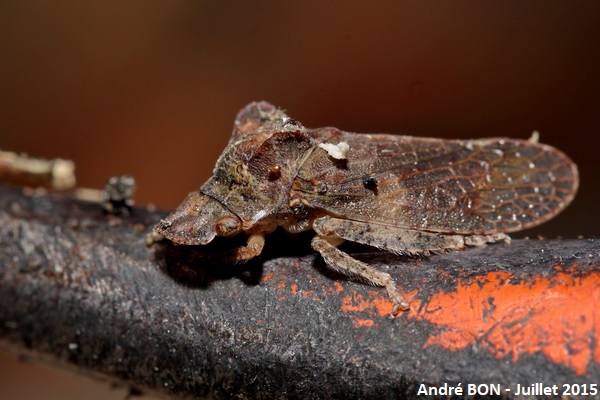
|
I have observed this Eared Leafhopper in my garden close to a Cherry tree and a Hazelnut tree, unless it came from the nearby forest where many Oaks grow. |
| [To know more about the Eared Leafhopper] [Next picture] [Previous picture] [Top] |
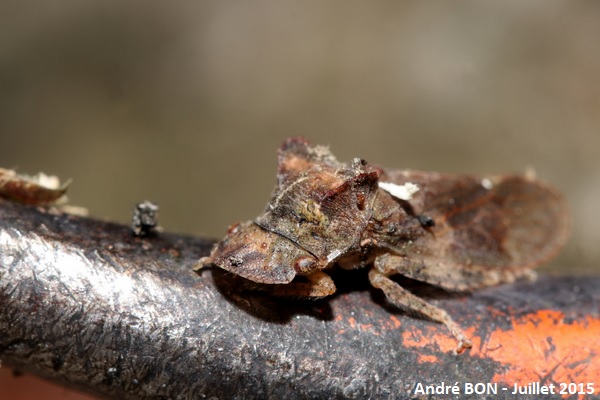
|
The head is really flattened. |
| [To know more about the Eared Leafhopper] [Next picture] [Previous picture] [Top] |
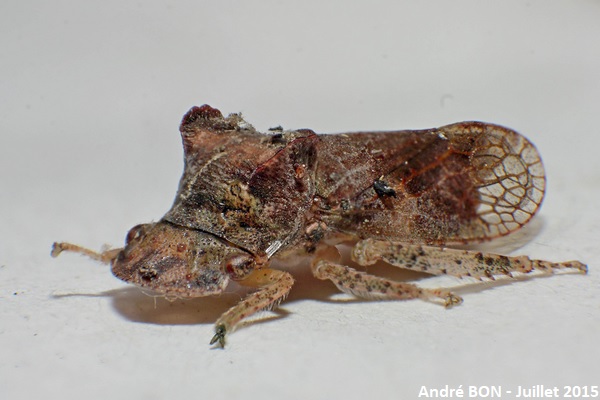
|
I have moved this Eared Leafhopper onto a white sheet of paper and as it stayed perfectly immobile I have tried some "photo stacking". This image is a merge of the sharp areas of 6 photos, each one shot after a small move of the camera. The goal is to increase the depth of field. |
| [To know more about the Eared Leafhopper] [Next picture] [Previous picture] [Top] |
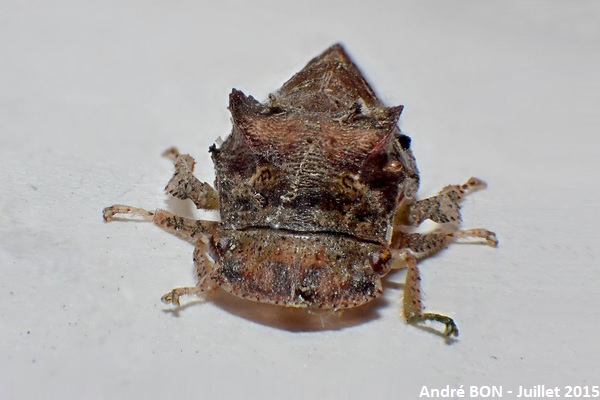
|
"Photo Stacking" of a front view made by the merge of 49 photos. |
| [To know more about the Eared Leafhopper] [Next picture] [Previous picture] [Top] |
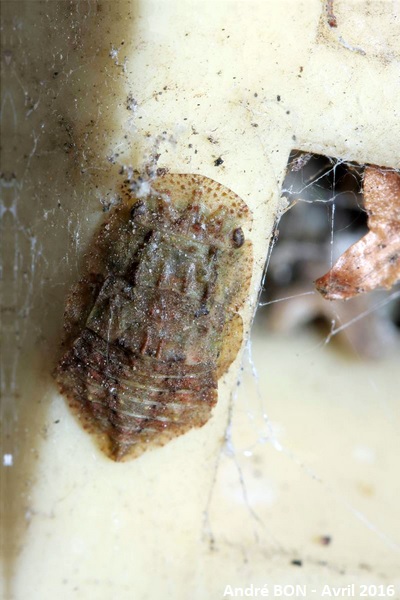
|
Here is the Eared Leafhopper's larva, observed in my garden where there are no Oaks. It is very flattened in shape and can be difficult to see on tree bark. I had some luck here with a uniform surface. |
| [To know more about the Eared Leafhopper] [Previous picture] [Top] |
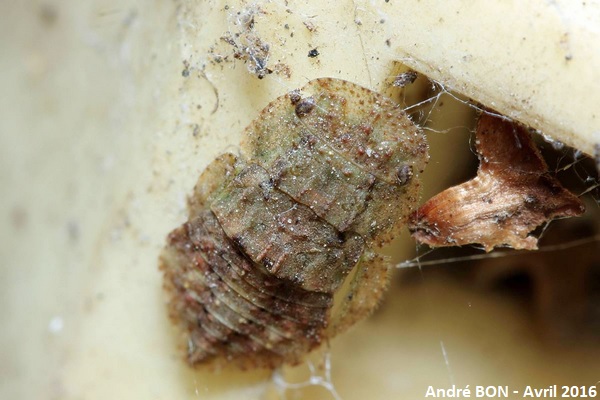
|
I took a few shots and not completely satisfied with the results, I came back a few minutes later and the larva had disappeared. I am very curious to know how and at what speed it moves, hoping to be able to observe this movement in the future... |